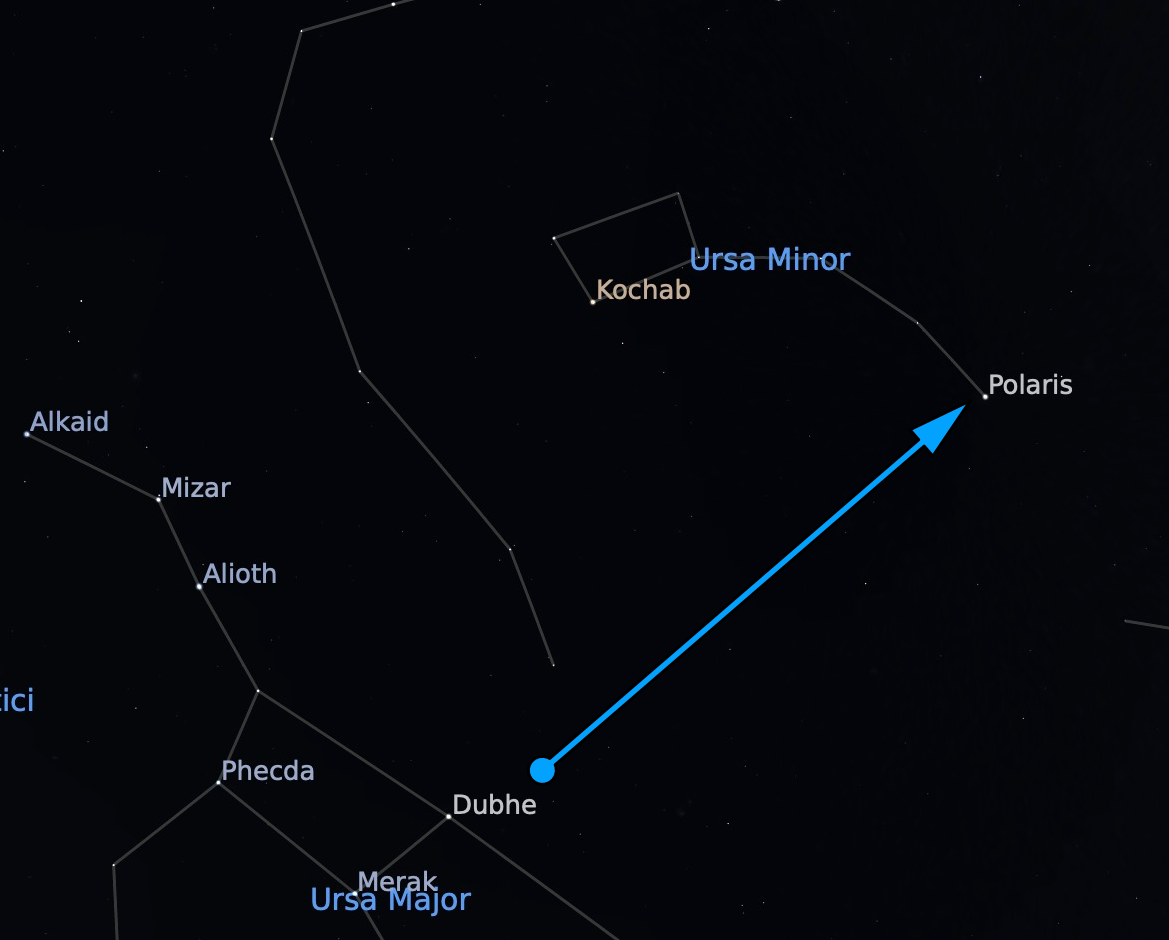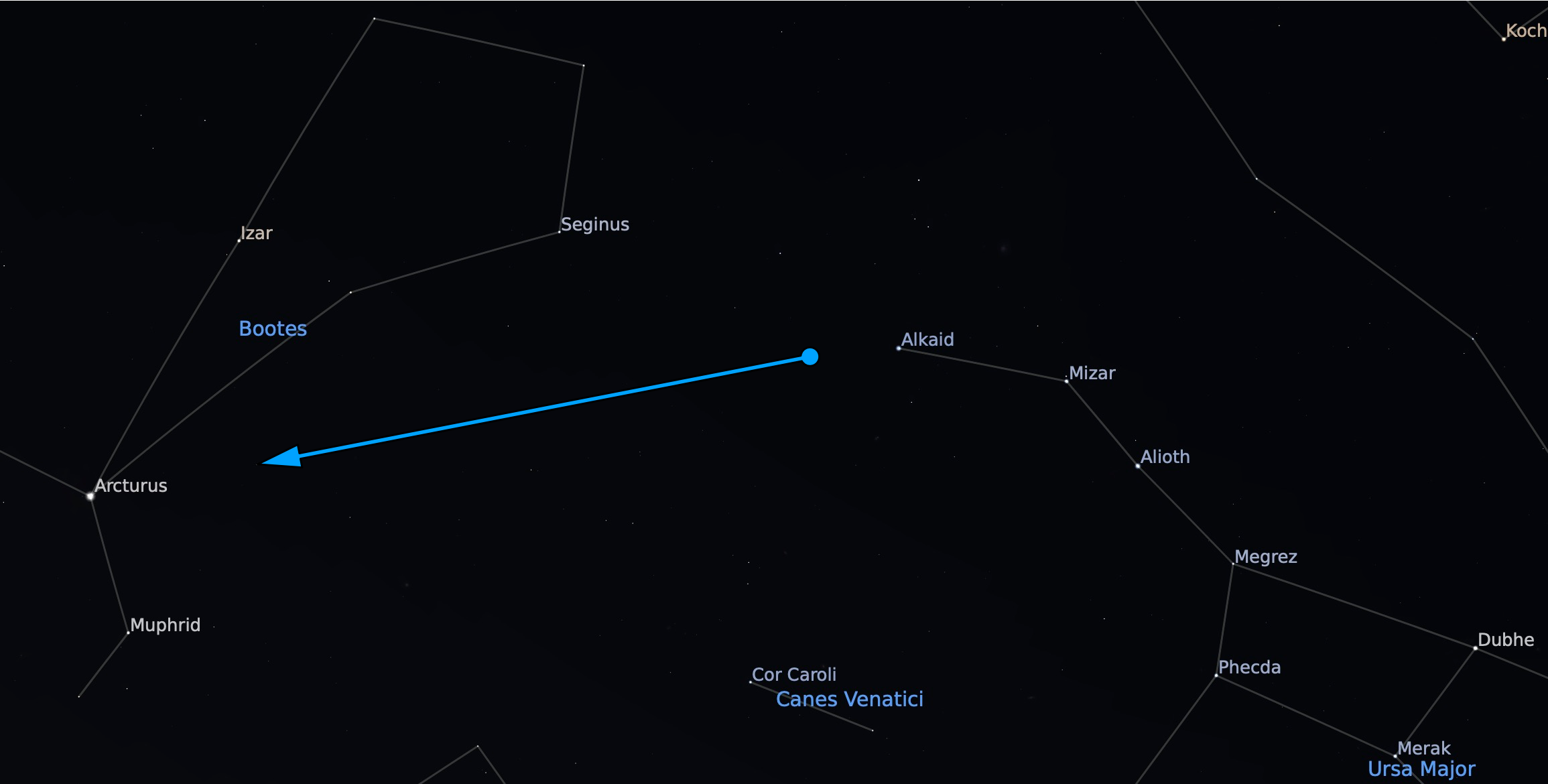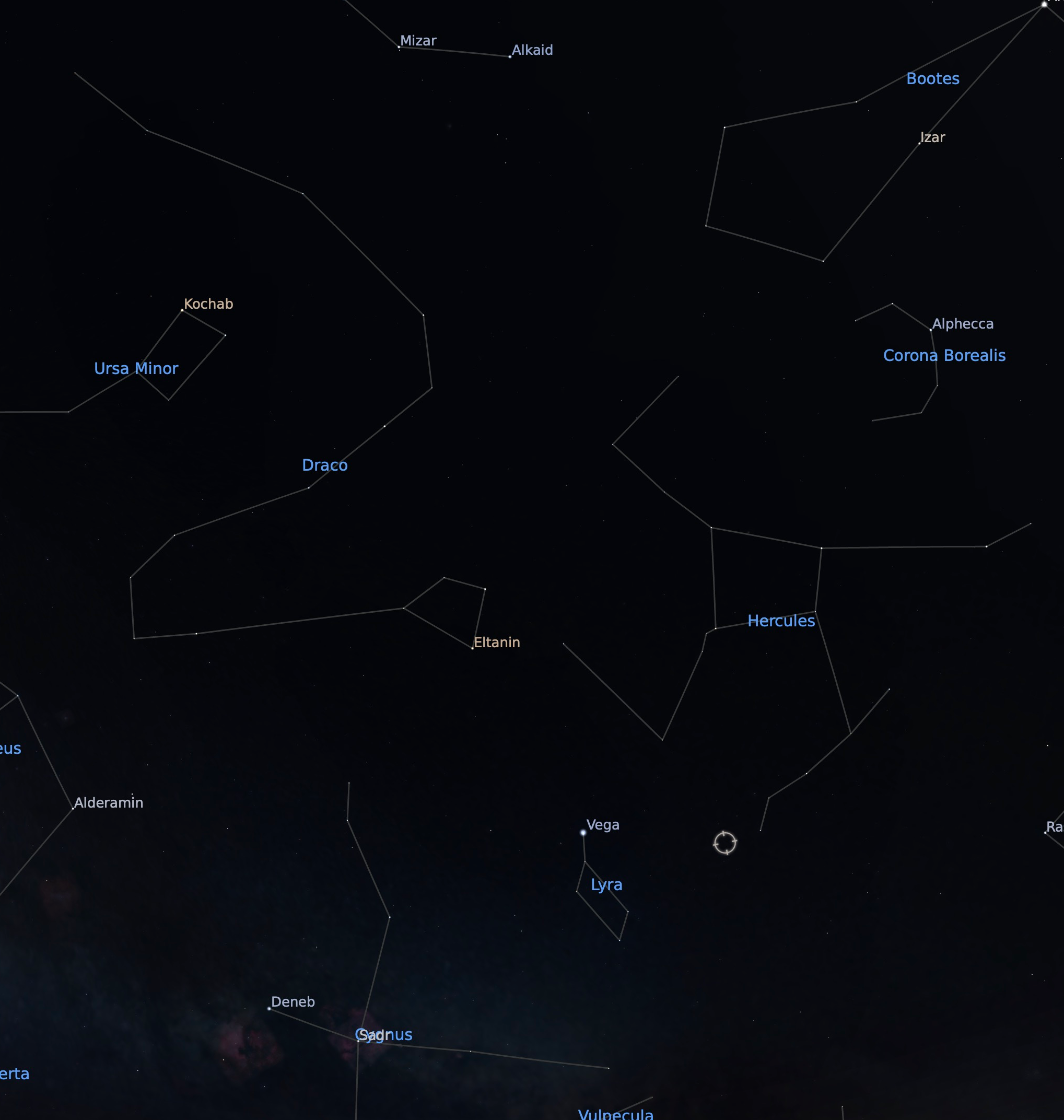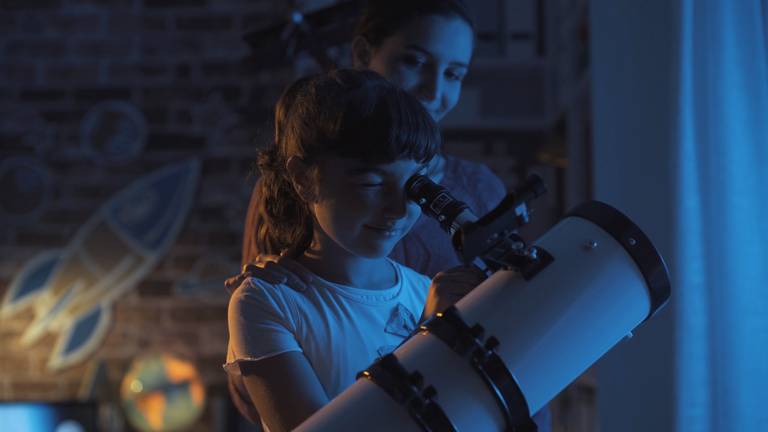The Constellations of Spring (March to May)

We can use the dipper to find other stars and constellations. For example, by drawing an invisible line through Merak and Dubhe, we come to Polaris, the brightest star in the constellation Ursa Minor, the Little Bear.
Finding Polaris
Polaris is special because it appears directly above our north pole. As a result, it never seems to move and always appears due north.

Finding the Leo constellation
Now let’s draw a line through Megrez and Phecda. This brings us to Leo, the Lion, and it’s one of the few constellations that actually looks like what it’s supposed to represent! Its brightest star is called Regulus, which means “little king.” An appropriate name for the king of the jungle!

The Bright Arcturus
Following the curved handle of the dipper, you’ll come to a bright, orange-colored star called Arcturus. This is the brightest star in the constellation Boötes, the Herdsman. Arcturus is a “giant star,” just 37 light years away. That makes it one of the closest stars to the Sun.

April Lyrids : The Shooting Stars!
If you want to see something special, go outside on April 22nd. That’s when the Lyrid meteor shower is at its best and you could see a few shooting stars in the sky. Shooting stars are just tiny pieces of dust and rock, no bigger than an apple seed. As they fly through space, they sometimes enter our atmosphere and burn up. That’s when you see a shooting star!










